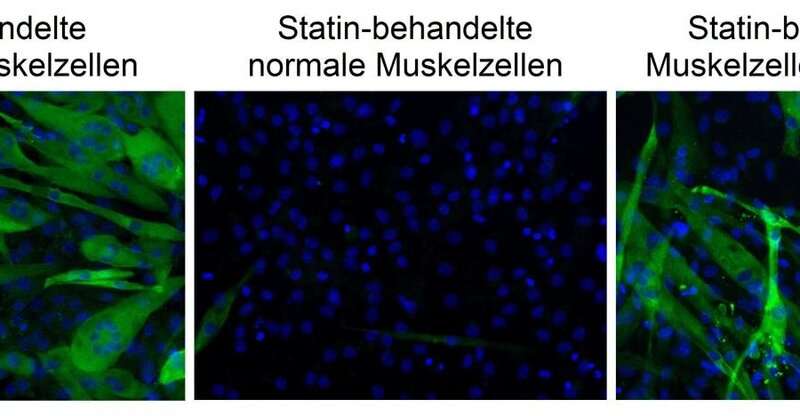
Patients who take statins in order to lower their blood cholesterol levels often complain about muscle problems, typically muscle pain. But why this occurs is still largely unresolved. In a recent study, the pharmaceutical scientists Professor Alexandra K. Kiemer und Jessica Hoppstädter from Saarland University have identified a potential causal relationship. According to the results of their work, statins cause enhanced production of a protein called ‘GILZ’ that impairs muscle cell function.
The study has been published in The FASEB Journal under the title “The Glucocorticoid-Induced Leucine Zipper Mediates Statin-Induced Muscle Damage.”
Cholesterol-lowering drugs, which are commonly referred to as statins, are some of the most frequently prescribed drugs around the world. Generally speaking, statins are well tolerated by patients. However, it is not uncommon for patients on statins to complain of muscle pain or muscle weakness. “According to figures from observational studies, muscle problems have been found to occur in 5% to 29% of cases. Older patients and female patients appear to be at greater risk of developing these symptoms, but so too are patients that are very physically active,” explains Alexandra K. Kiemer, Professor of Pharmaceutical Biology at Saarland University. In 2018, more than 6 million patients in Germany were treated with statins. This would suggest that muscle problems may be affecting several hundreds of thousands of patients, potentially as many as 1.8 million, in Germany alone. The precise nature of the bodily processes that induce symptoms of muscle impairment has not yet been fully characterized.

Alexandra K. Kiemer and her research group may now have identified the actual cause of the muscle pain affecting patients receiving statins. They believe that a protein known as GILZ is responsible. “The acronym GILZ stands for glucocorticoid-induced leucine zipper,” explains Professor Kiemer. Over the years, her research group has conducted numerous experimental studies into this particular protein. “The main function of GILZ is actually to suppress inflammatory processes in the body. Statins prevent cardiovascular disease not only by lowering blood cholesterol levels, but also by reducing vascular inflammation. That’s why we thought there might be a connection between statins and GILZ. Our data indicate that the presence of GILZ in the body can have both positive and negative effects,” says Kiemer. Building on this initial conjecture that there might be a link between the protein GILZ and statins and their side effects, the pharmaceutical researchers began analysing numerous datasets drawn from research databases available around the world.
They assessed the data in terms of whether statins influenced the production of GILZ in the body. After confirming their original suspicions, the researchers were able to corroborate their hypothesis by carrying out a series of experiments on living cells. “Statins cause an increase in the cellular production of the GILZ protein. This, however, leads to impaired muscle function, because increased GILZ production results in an increased rate of muscle cell death. In addition, the formation of muscle fibres is inhibited,” says Alexandra K. Kiemer. The research team then tried switching off the GILZ protein in living cells and observing what effect the statins then had. “When we look at what happens when statins are administered to muscle cells or entire muscle fibres in which GILZ has been genetically deactivated, the damage that was previously observed is now almost completely absent,” says Kiemer.
Source: Read Full Article





